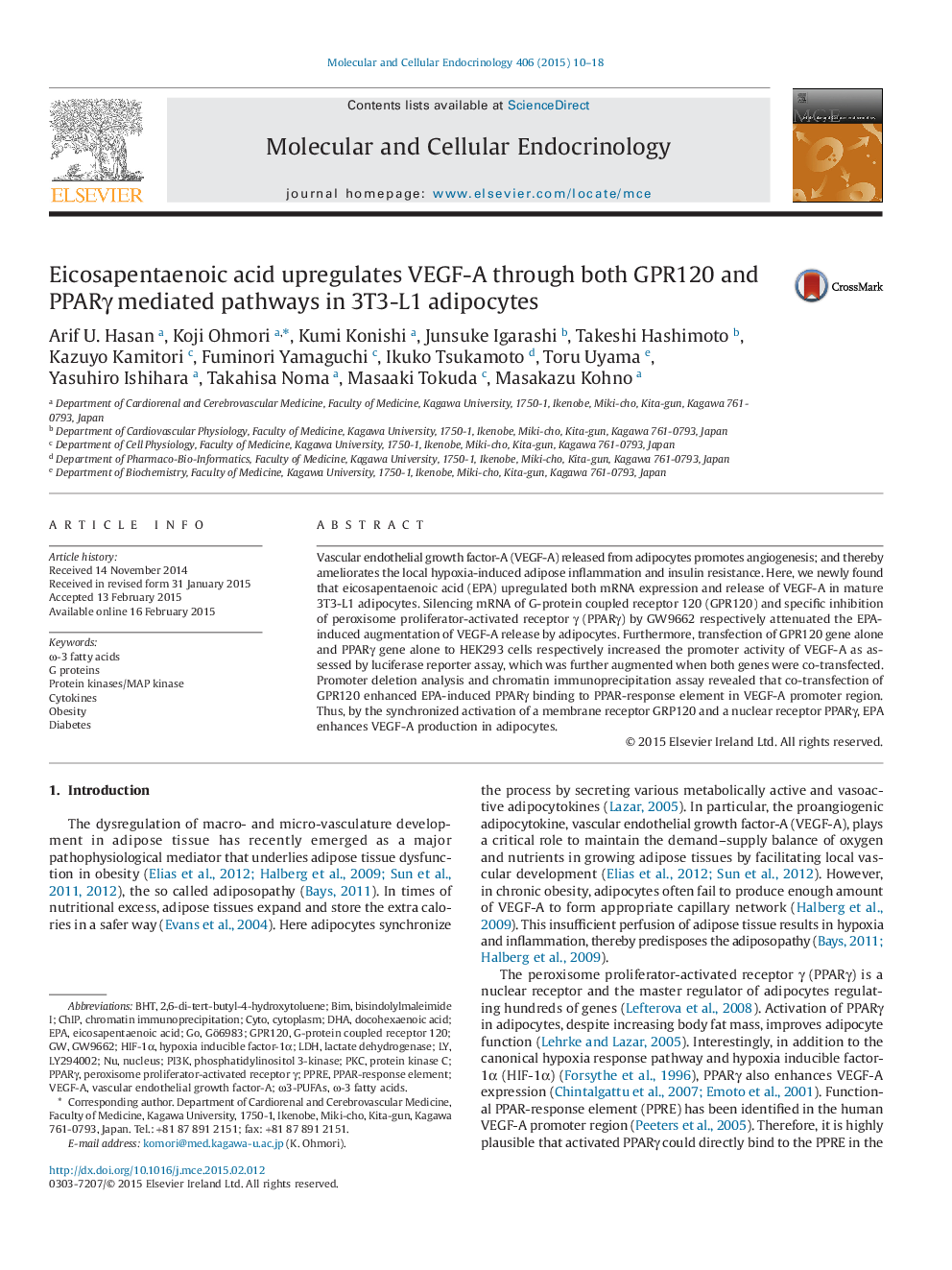| Article ID | Journal | Published Year | Pages | File Type |
|---|---|---|---|---|
| 2195841 | Molecular and Cellular Endocrinology | 2015 | 9 Pages |
•EPA upregulated VEGF-A production in mature 3T3-L1 adipocytes.•GPR120 silencing or chemical inhibition of PPARγ attenuated the effect on VEGF-A.•GPR120 and PPARγ genes synergistically enhanced VEGF-A transcription in HEK293 cells.•GPR120 augmented PPARγ binding to PPRE in VEGF-A promoter region.•EPA links membrane receptor GRP120 and nuclear receptor PPARγ for VEGF-A production.
Vascular endothelial growth factor-A (VEGF-A) released from adipocytes promotes angiogenesis; and thereby ameliorates the local hypoxia-induced adipose inflammation and insulin resistance. Here, we newly found that eicosapentaenoic acid (EPA) upregulated both mRNA expression and release of VEGF-A in mature 3T3-L1 adipocytes. Silencing mRNA of G-protein coupled receptor 120 (GPR120) and specific inhibition of peroxisome proliferator-activated receptor γ (PPARγ) by GW9662 respectively attenuated the EPA-induced augmentation of VEGF-A release by adipocytes. Furthermore, transfection of GPR120 gene alone and PPARγ gene alone to HEK293 cells respectively increased the promoter activity of VEGF-A as assessed by luciferase reporter assay, which was further augmented when both genes were co-transfected. Promoter deletion analysis and chromatin immunoprecipitation assay revealed that co-transfection of GPR120 enhanced EPA-induced PPARγ binding to PPAR-response element in VEGF-A promoter region. Thus, by the synchronized activation of a membrane receptor GRP120 and a nuclear receptor PPARγ, EPA enhances VEGF-A production in adipocytes.
